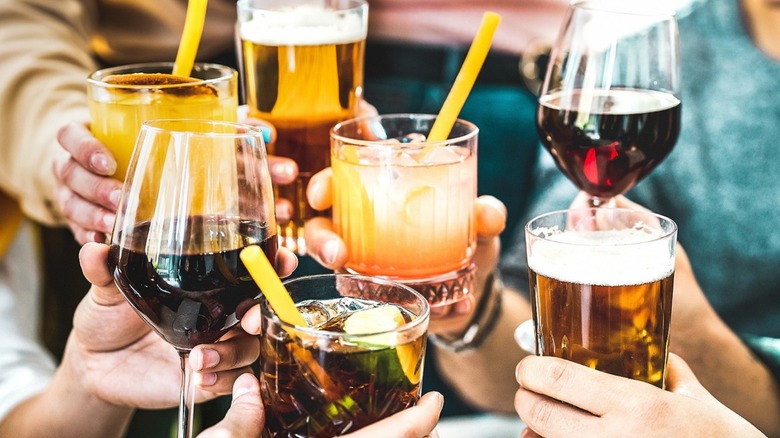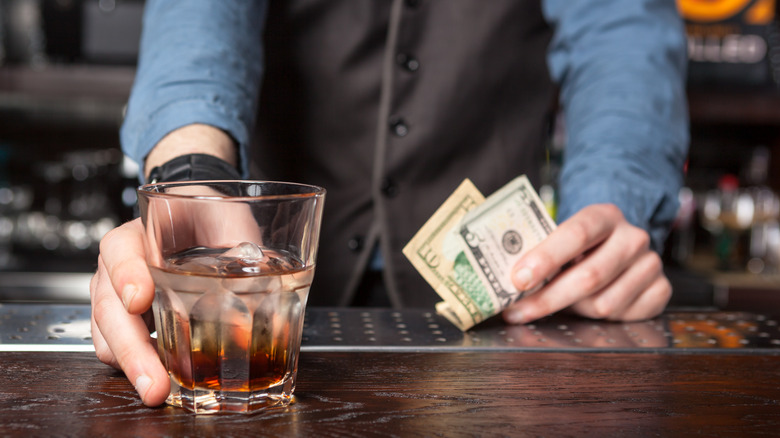Here's Why Cocktails Are So Expensive At Restaurants
A night out at the bar can be fun — but paying the bill afterward might not be. Inflation is hitting the alcohol industry, just as it's creating sticker shock for soda and snack shoppers. Price increases that have taken place during the pandemic have been astronomical, or, as the National Restaurant Association rather obliquely puts it, "elevated in historical terms." After all, last summer, food inflation was the worst it's been in nearly a half-century. During the month of November 2022, for example, beer prices alone rose at more than double the rate of average grocery inflation.
This widespread inflation is driving up cocktail prices, too, and not just because the cost of booze is rising. Transporting goods has become more expensive; at one distillery in California, managers saw freight costs more than double in 2021. And the other non-alcoholic ingredients in classic cocktails aren't exactly getting cheaper, either. A New York bar owner noted the price of a case of limes has spiked from $20-$30 to over $100 over the past few years.
But while inflation does play a major role in why cocktails are so expensive, it's not the only culprit. For a long time, restaurants have been overpricing alcohol as a surefire way to make extra money in a difficult industry.
Restaurants were already putting serious price markups on booze
It's no secret that making money as a restaurateur isn't easy. Even fast food chains that have been around for decades are struggling. At many restaurants, though, owners have a trick up their sleeve: the bar.
Wine is the most transparent example of how restaurants mark up drinks. An industry standard, for example, is to price one glass at the wholesale cost of the entire bottle. And to be fair, this is rooted in necessity. One bottle may yield around four glasses, but there's no guarantee a restaurant would sell four glasses of a given wine before its quality starts to decline. For a $15 bottle of wine purchased by a restaurant, pricing each glass at $15 as well guarantees they cannot lose money on the bottle once it's opened.
This is true for cocktails, too, and it saves restaurants' bottom lines. Wine and spirits are how steakhouses, for example, really make their money — while 60–70% of their gross revenues come from food, 80% of their gross profit is made at the bar. That's why it's prudent to avoid the second-cheapest option on the menu: It might actually be a lower-quality drink marked up to trick you.

